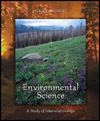 |
1 |  | 
Which of the following is not a part of an organism's environment? |
|  | A) | the flow of energy necessary to maintain the organism |
|  | B) | climate |
|  | C) | all the plants and animals that the organism interacts with during its lifetime |
|  | D) | temperature |
|  | E) | all of the above are part of the organism's environment |
 |
 |
2 |  | 
A trout cannot live in a slow, warm stream because the oxygen concentration in the water is too low. In this case, the oxygen concentration is |
|  | A) | a range of tolerance. |
|  | B) | a niche. |
|  | C) | a limiting factor. |
|  | D) | a delineating factor. |
|  | E) | none of the above. |
 |
 |
3 |  | 
The functional role an organism has in its surroundings is called the organism's habitat. |
|  | A) | True |
|  | B) | False |
 |
 |
4 |  | 
In ecology, the process of more successful individuals surviving and reproducing larger numbers of offspring than unsuccessful individuals can reproduce is called |
|  | A) | natural selection. |
|  | B) | predation. |
|  | C) | mutualism. |
|  | D) | speciation. |
|  | E) | none of the above. |
 |
 |
5 |  | 
Ecologists call the phenomenon "speciation" when two populations of a single species become separated for a long period of time and, as a result, two species eventually form as these two subgroups respond to different ecological pressures. |
|  | A) | True |
|  | B) | False |
 |
 |
6 |  | 
Which of the following is not an example of an ecological interaction between organisms? |
|  | A) | predation |
|  | B) | competition |
|  | C) | mutualism |
|  | D) | commensalism |
|  | E) | all of the above are examples |
 |
 |
7 |  | 
In a grassland, when tall grasses shade out short, shade-intolerant species, ecologists call this interaction |
|  | A) | parasitism. |
|  | B) | predation. |
|  | C) | habitat destruction. |
|  | D) | competition. |
|  | E) | commensalism. |
 |
 |
8 |  | 
Which of the following is not an example of a symbiotic relationship between organisms? |
|  | A) | parasitism |
|  | B) | competition |
|  | C) | commensalism |
|  | D) | mutualism |
|  | E) | all of the above are examples |
 |
 |
9 |  | 
Commensalism occurs when both species that interact are benefited and the relationship is obligatory. |
|  | A) | True |
|  | B) | False |
 |
 |
10 |  | 
Many plants have nitrogen-fixing bacteria that live in their root nodules. This is an example of |
|  | A) | commensalism. |
|  | B) | mutualism. |
|  | C) | competition. |
|  | D) | ecological communities. |
|  | E) | none of the above. |
 |
 |
11 |  | 
Which of the following is not an example of a major role an organism can have in an ecosystem? |
|  | A) | producer |
|  | B) | consumer |
|  | C) | decomposer |
|  | D) | trophic supervisor |
|  | E) | The major roles in an ecosystem are: Producers, consumers, and decomposers. |
 |
 |
12 |  | 
Which term names the trophic level in which energy from the sun is chemically trapped? |
|  | A) | carnivore |
|  | B) | herbivore |
|  | C) | producer |
|  | D) | decomposer |
|  | E) | none of the above |
 |
 |
13 |  | 
As energy passes through the trophic levels in a food chain, the amount of energy in each higher trophic level increases due to the second law of thermodynamics. |
|  | A) | True |
|  | B) | False |
 |
 |
14 |  | 
Which of the following would be part of the carbon cycle? |
|  | A) | animal respiration |
|  | B) | plant respiration |
|  | C) | production of sugars in plants |
|  | D) | production of proteins in animals |
|  | E) | all of the above |
 |



 2002 McGraw-Hill Higher Education
2002 McGraw-Hill Higher Education